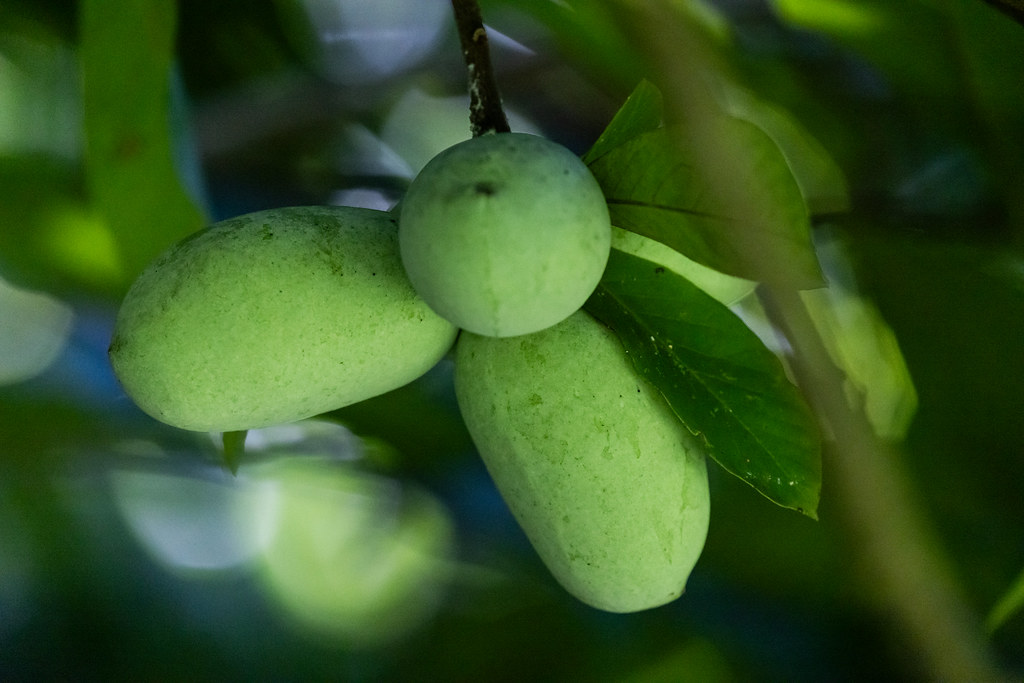Paw Paw
Asimina triloba
The paw paw is a small, deciduous tree with large, long leaves and distinctive green, mango-like fruits. It grows in rich, moist forested areas throughout the Chesapeake Bay watershed.

Appearance
Paw paws have long, pear-shaped leaves with pointed tips. Leaves have fine, white hairs on top and rusty-colored hairs on the bottom. The leaves turn yellow in autumn. Small, maroon flowers with velvety petals bloom in April to May. Yellowish-green, mango-like fruits grow in September to October. The paw paw grows to 35 feet tall.
Reproduction and Life Cycle
Paw paws usually reproduce asexually when roots bud and form new shoots, which is why they often form small colonies. They can also reproduce sexually with fruits containing 10 to 14 brown, lima bean-shaped seeds that are spread by animals.
Did You Know?
- Paw paws are listed as a threatened species in New York.
- The paw paw fruit is the largest edible fruit native to the United States. Fruits are sometimes referred to as Indian bananas or custard bananas.
- The leaves smell like green bell peppers when crushed.
- Paw paws attract small mammals such as raccoons, squirrels and opossums, which feast on the tree’s abundant fruits. In addition, zebra swallowtail butterfly larvae feed exclusively on paw paw leaves.
- Many Native American tribes ate paw paw fruits, mashing them to make small cakes or drying them in the sun to store for winter. They valued the tree so much that they spread it throughout much of the eastern U.S.
Sources and Additional Information
- Native Plants for Wildlife Habitat and Conservation Landscaping: Chesapeake Bay Watershed – U.S. Fish and Wildlife Service
- PLANTS Profile for Asimina triloba – USDA Natural Resources Conservation Service
- VTree ID: Pawpaw – Virginia Tech
- Asimina triloba – U.S. Forest Service
